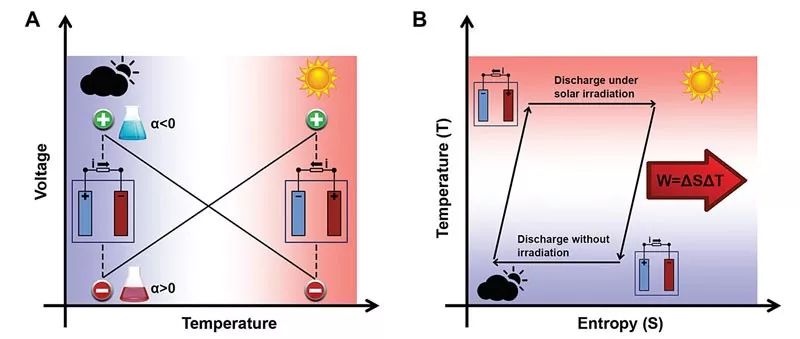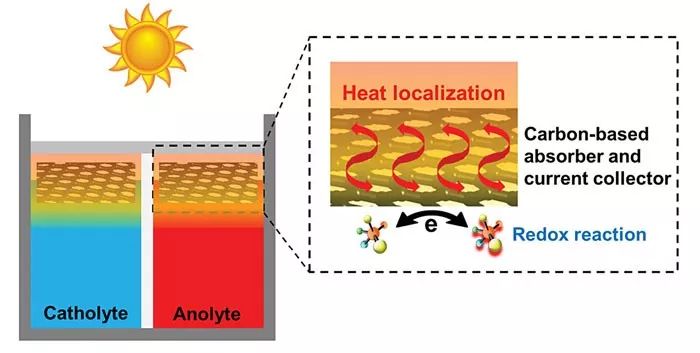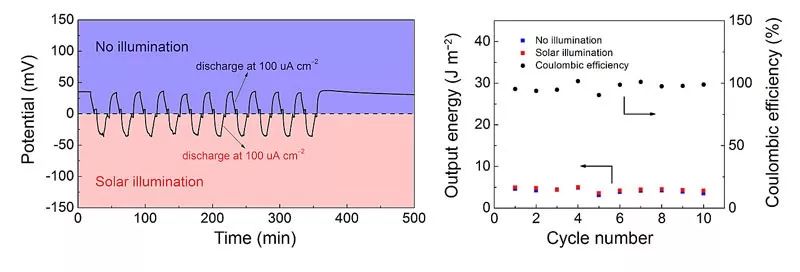
As the most widely available energy source on Earth, the solar radiation reaching the Earth’s surface each year is immense, and it can be directly developed and utilized without geographical limitations. Therefore, solar energy is a promising emerging renewable energy source that can replace fossil fuels. Typically, solar power generation converts sunlight into electrical energy through the photovoltaic effect. Solar power generation is a renewable and environmentally friendly way to generate electricity, as it does not produce carbon dioxide or other greenhouse gases during the process. However, as an intermittent energy source, the effective utilization of solar energy relies not only on efficient solar cells but also on advanced energy storage systems to achieve all-weather energy transmission. On the other hand, the production process of solar panels generally requires complex and expensive techniques and generates a large amount of toxic wastewater. Additionally, the disposal of discarded solar cells poses a problem; without a proper recycling mechanism, it can lead to environmental pollution. Therefore, the broader utilization of solar energy awaits the development of new technologies.

(A, B) Schematic diagram of the principle of solar-driven regenerative electrochemical cycles

Design of solar-driven regenerative electrochemical cycle devices and schematic of dual-function graphene current collector/radiation absorber
Recently, a team led by Professor Guihua Yu from the University of Texas at Austin reported a novel, green, low-cost energy device that simultaneously achieves solar energy conversion and collection. Based on the principle of thermoelectric batteries, Professor Yu’s team has innovatively designed a solar-driven regenerative electrochemical cycle. Through systematic screening of active molecules and electrochemical research, this energy system achieved a Seebeck coefficient of up to -1.8 mV/K and maintained 98% of its capacity after 500 charge-discharge cycles, with all active materials derived from resource-rich materials and no need for complex preparation and assembly processes. This system not only enables effective utilization of sunlight but also collects a broader range of thermal energy resources. Even low-quality heat sources with a temperature difference of 35 degrees Celsius compared to room temperature can achieve a conversion efficiency of 11.9% compared to the Carnot cycle. To further enhance solar energy conversion efficiency, Professor Yu’s team designed a graphene-based dual-function current collector and solar radiation absorber that exhibits excellent conductivity, light radiation absorption rate, and photothermal conversion efficiency. Concept validation tests under light conditions further confirmed the stability of this system and its negligible self-discharge, showcasing its enormous potential and providing new ideas for the design and development of next-generation sustainable green energy devices.

Discharge voltage curve and Coulomb efficiency of the concept validation
This achievement was recently published in Energy & Environmental Science, under the Royal Society of Chemistry, with Professor Guihua Yu as the corresponding author. Professor Yu’s research group focuses on designing novel energy conversion and storage devices from a chemical perspective, integrating interdisciplinary research in chemical science, materials science, and energy science, including optimizing the physical/chemical properties of active materials through organic synthesis, studying the electrochemical reaction mechanisms and reaction kinetics at the molecular level, and developing a series of novel organic flow batteries and biomimetic flow batteries through high-performance theoretical calculations and simulations. By extending the principle of “atomic economy” to the energy field, they have pioneered new methods for developing next-generation green energy storage materials and provided new concepts for the molecular design of redox reaction pairs.
Original text (Scan or long press the QR code to access the original text page):
Simultaneous energy harvesting and storage via solar-driven regenerative electrochemical cycles
Yu Ding, Xuelin Guo, Katrina Ramirez-Meyers, Yangen Zhou, Leyuan Zhang, Fei Zhaoa, Guihua Yu
Energy Environ. Sci., 2019, DOI: 10.1039/C9EE01930H
https://www.x-mol.com/university/faculty/37838


This article is copyrighted by X-MOL (x-mol.com), reproduction without permission is prohibited! Readers are welcome to share it on WeChat Moments or Weibo!
Long press the image below to recognize the QR code and easily follow us!
Click “Read the original text” to view all indexed journals in the Chemistry • Materials field









